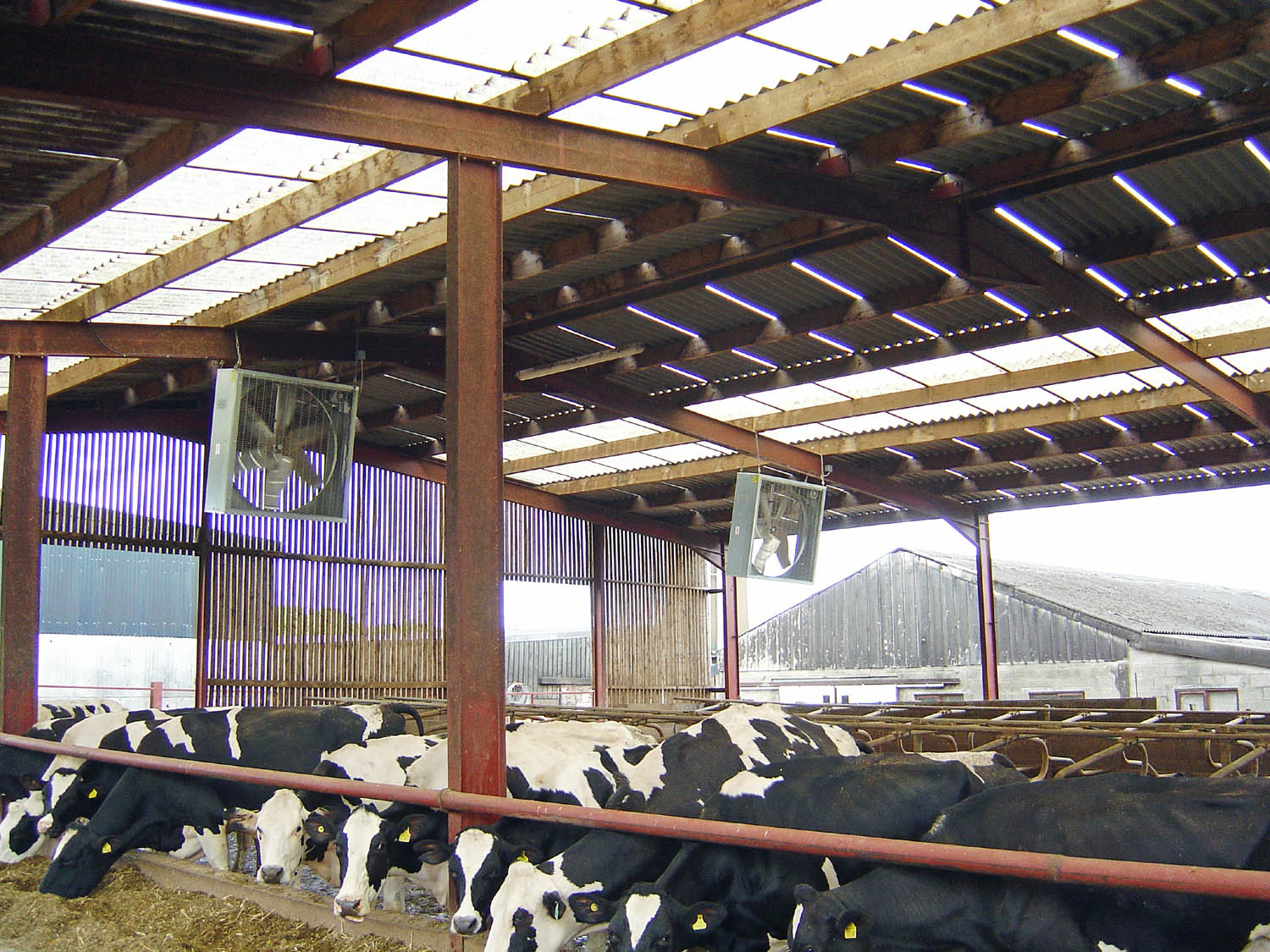Combating Heat Stress In Livestock
Specialists for 40 years in optimising crop storage conditions, Martin Lishman have extended their ventilation range to benefit the livestock industry

StoreVent Air Extraction SystemThe StockVent system has been specifically designed to provide dairy farmers with products that maximise animal productivity, efficiency and health.
Typically, a mature dairy cow generates four to five gallons of water per day in exhaled humidity. StockVent is designed to continuously remove this moisture as well as the heat and odours generated by dairy herds and replenish the supply of oxygen by bringing in cooler, drier air from outside the building. By providing the necessary air exchange required, the system can remove harmful gases such as ammonia, methane and hydrogen sulphide, which clearly benefits the animals but also provides a more comfortable working environment.
“Our StoreVent building air extraction system has been improving crop store ventilation for many years. We have identified that a high percentage of livestock buildings in the UK are poorly ventilated, which can cause an overall fall in milk production of between 20-30%”, says Dr Gavin Lishman, Managing Director of Martin Lishman Ltd. “The StockVent system is designed to enhance the quality of the air in the buildings throughout each season of the year”.
The StockVent system includes high efficiency belt-drive fans, high quality recirculation fans as well as pedestal and wall fans to circulate air in a wide variety of parlour and barn applications.
By combating the adverse effects of heat stress on dairy cows, StockVent maintains a lower operating temperature in dairy barns, which means a positive step towards significant increases in milk production and fertility as well as helping to reduce cases of clinical mastitis and other diseases such as pneumonia.
A monitoring and control system, also available from Martin Lishman Ltd, can assist the dairy farmer reduce energy costs by only switching ventilation fans on when there is a significant rise in temperature and humidity inside the livestock building. Alternatively, a Kestrel Thermo-Anemometer can be supplied to monitor the temperature and humidity manually; referring to the heat index appropriate for the animals, necessary cooling measures can then be taken.
CONTACT
Dr Gavin Lishman
Martin Lishman Ltd
gavin@martinlishman.com
www.martinlishman.com
+44 (0) 1778 426600
Monday 21 April 2014 / file under Engineering | Agriculture


